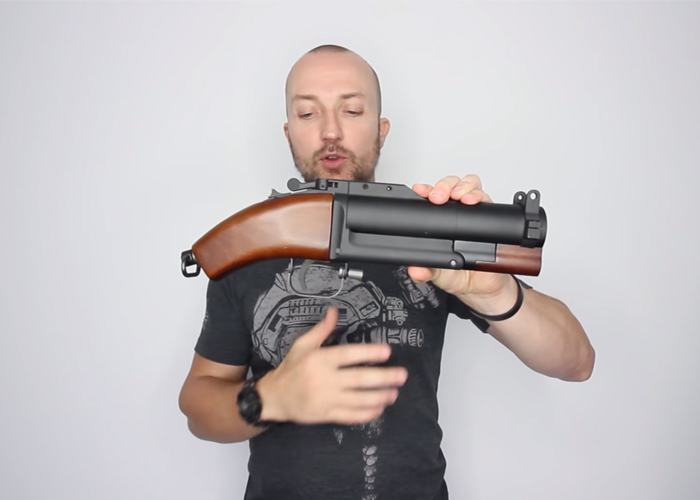

It is best to keep enemies at arm's length, allowing its user to fire a shot and duck into cover to reload. The M79 Thumper is a highly effective shotgun-like weapon, held back only by its single round capacity. It is best to pair the M79 Thumper with an automatic primary weapon as one might encounter foes when repositioning and the M79 lacks the ability to eliminate multiple enemies quickly.

However, it retains its damage, allowing for a 1SK anywhere out to 100 studs and 1SK headshot at all ranges. The 40mm Sponge ammunition attachment changes the weapon drastically, making it fire a single projectile with considerable bullet drop. It retains its effectiveness out to a considerable range, making it decent at medium range even without ammo attachments. The weapon is best used as a "second primary" for picking off single targets. Unlike other shotguns, the M79 can equip Armor Piercing and Hollow Point. The weapon can equip many different types of ammunition. As a result, one has to be selective when choosing targets, especially in a close-quarters environment or when multiple enemies are nearby. It has very high damage and is capable of a 1SK up to pretty good distances, but it only holds a single shot. The M79 is a high-risk high reward weapon. It can also fire a wide variety of 40mm rounds, including explosive, anti-personnel, buckshot, and flechette. Due to its distinct sound, it has earned the nicknames of "Thumper", "Bloop Tube", "Blooper", "Thump Tube", and "Elephant Gun". It made its first debut in the Vietnam War. The M79 Thumper is a single shot, a break-action grenade launcher that fires the 40x46mm grenade. The Marines assigned one grenadier to their three-fire team 14-man rifle squad. M79s were assigned to the specialist 4 grenadier in both 4-5-man fire teams organic to an Army rifle squad headed by a squad leader.

When M79 saw combat in the Vietnam War beginning in the early days, M79 Grenadiers assigned to major Army divisions first arrived to see combat in Vietnam in 1965, including the 1st Cavalry Division, the 1st Infantry Division, the 101st Airborne Division, and the 173rd Airborne Brigade. With a new folded leaf sight, the XM79 was officially adopted as the M79 on December 15, 1960. Unable to solve the problems with the multi-shot T148 launcher, the Army adopted the S-5 as the XM79. This was refined into the S-5, which resembled an oversized single-barrel shotgun. The other design was a single-shot break-open, shoulder-fired weapon, the S-3. One of the launchers at Springfield Armory was the three-shot "harmonica" T148 (not to be confused with the later, underbarrel XM148), which did see some limited production and fielding in Vietnam, but problems with the three-round magazine prevented widespread acceptance. Project Niblick created the 40 x 46 mm grenade, but was unable to create a satisfactory launcher for it that could fire more than a single shot. The M79 was a result of the US Army's Project Niblick, an attempt to increase firepower for the infantryman by having an explosive projectile more accurate with further range than rifle grenades, but more portable than a mortar.


 0 kommentar(er)
0 kommentar(er)
